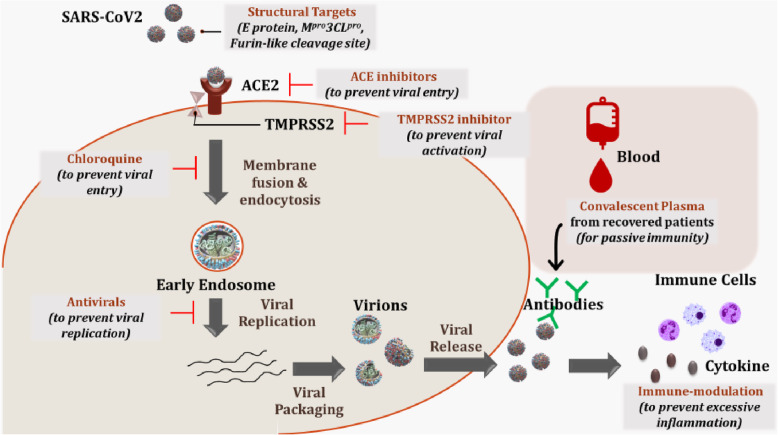Fig. 2.
Potential drug targets and strategies being tested to contain SARS-CoV-2 infection. SARS-CoV2 has a high binding affinity to ACE2 receptors found in abundance in the type II pneumocytes in the lung alveolar epithelium. This could be targeted by ACE inhibitors/ARBs. On binding to the ACE2 receptors, TMPRSS2 protease cleaves the viral S protein and enable the engulfment of the viral body into the cell. Here the viral proteases enable the fusion of the endosomal membrane and release of viral RNA (genome) into the host’s cytoplasm. TMPRSS2 inhibitors or antimalarial drugs (chloroquine/hydroxychloroquine) can prevent this engulfment. The viral RNA now hijacks the host’s translational machinery to express viral proteins and further enables viral replication and packaging. This is the site of action for various antiviral drugs being tested in clinical trials at present. The viral RNA and protein get packaged as virions which are ultimately released into the extracellular space, where it leads to release of pro-inflammatory cytokines/chemokines and infiltration of immune cells. It is speculated that the heightened immune response is responsible for the disease severity in COVID-19 patients, thus immune-modulation is one of the alternate to be used to prevent serious outcomes. Alternate approaches like targeting viral structural targets or use of convalescent plasma to induce passive immunity are other strategies which are being explored at present

